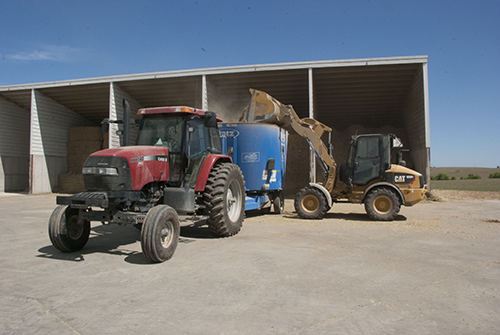
"Shrink is not your dad or your grandpa's problem," said Keith Sather, of K.S. Dairy Consulting. "Shrink takes place today on beautiful dairies."
During his presentation last week at the Precision Dairy Conference in Rochester, Minn., Sather talked about the financial benefits of getting a handle on feed shrink. He said a 3 percent shrink correction equates to 25 cents per cow per day. On a farm with 750 cows, those savings could pay for a certified truck scale in just one year, Sather explained.
Where do you start reducing shrink? "One feed at a time," Sather said. The first step is identifying where shrink is taking place. Whether caused by wind, birds, rodents, spillage or spoilage, shrink equals waste, and any reduction in shrink makes a huge difference, Sather noted.
You can also minimize feed waste and analyze the effectiveness of your ration by measuring how much feed your cows are consuming, not just what they are being fed.
"Farms must measure dry matter intake," Sather said. "If not, you are missing an opportunity to tighten up the feed management of your dairy."
To accurately access dry matter intake, the clean-up or weigh-back feed material must be weighed. Tracking weigh-backs against dry matter and milk production will help a dairy determine what level of feed refusals maximizes milk output while minimizing feed waste.
There are some new technologies available to help farms measure feed and monitor intake, but even the fanciest equipment won't guarantee low feed losses. "It's not just precision technology . . . it's precision management," Sather explained.
The human factor is a huge part of precision management. Loading accuracy, proper mixing, timing and feedbunk maintenance all play a role in minimizing feed losses from step one.
Farms everywhere would benefit from a reduction in feed losses. What is the ultimate goal? "I think 3 percent shrink can be a real reality," said Sather.

The author is an associate editor and covers animal health, dairy housing and equipment, and nutrient management. She grew up on a dairy farm near Plymouth, Wis., and previously served as a University of Wisconsin agricultural extension agent. She received a master's degree from North Carolina State University and a bachelor's from University of Wisconsin-Madison.








